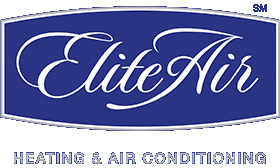A long time ago, our ancestors huddled around a fire to stay warm. These days, we have better and more comfortable ways to stay warm. Modern heating systems play a huge role in keeping our homes comfortable and the technology behind it continues to evolve at an amazing pace.
There are several different types of home heating systems we offer here at Elite Air. Let’s go over the most common types that are installed in the average New Jersey home, starting with furnaces.
Furnaces
By far and away the most common type of heating system installed in homes, furnaces come in a wide variety of sizes and forms. These forced-air heating systems rely on a strong blower fan connected to a network of ducts. As a set of burners or heating elements heat the air, the blower pushes the air throughout the ducts, delivering warm air to each room.
You’ll find furnaces that run on natural gas, propane, fuel oil or electricity. These units are often paired with air conditioning systems and regularly share the same duct system. The furnace’s main advantage – its ductwork – can also be its biggest drawback. Some smaller, older homes may not have enough room to accommodate a full duct system, for instance.
Boilers
Boilers are usually the domain of older apartments and homes. These systems typically consist of a central boiler that sends steam or water via pipes to radiators located throughout the home. It’s not as efficient as a furnace when it comes to heating the entire home, but it can provide zoned heating in many circumstances.
Like furnaces, boilers can run on a wide variety of fuels – natural gas, propane, fuel oil, electricity, and even biodiesel blends. Unlike other heating systems, however, boilers don’t dry out the surrounding air. That means users can feel more comfortable year-round. However, boilers can be a bit more expensive to repair, plus they can’t be combined with an air conditioning unit as a furnace can.
Heat Pumps
Think of a heat pump the same way you would an air conditioner. After all, heat pumps work on the same principle, except in reverse. Where an air conditioner ultimately collects heat to move from indoors to outdoors, a heat pump gathers latent heat from outdoors to bring indoors.
It’s also easy to switch from heating to cooling mode when summer rolls around. The only downside of a heat pump is that it’s not as efficient as a furnace when operating in frigid temperatures.
Mini-Split Systems
Mini-split systems are a great alternative for older homes that can’t accommodate traditional ducted heating systems. Instead, these systems use multiple air handler units, mounted to the wall of each room and connected to a single condenser unit located outdoors. This setup allows for zoned climate control, since each air handler can be controlled individually to provide comfort tailored for each room.


